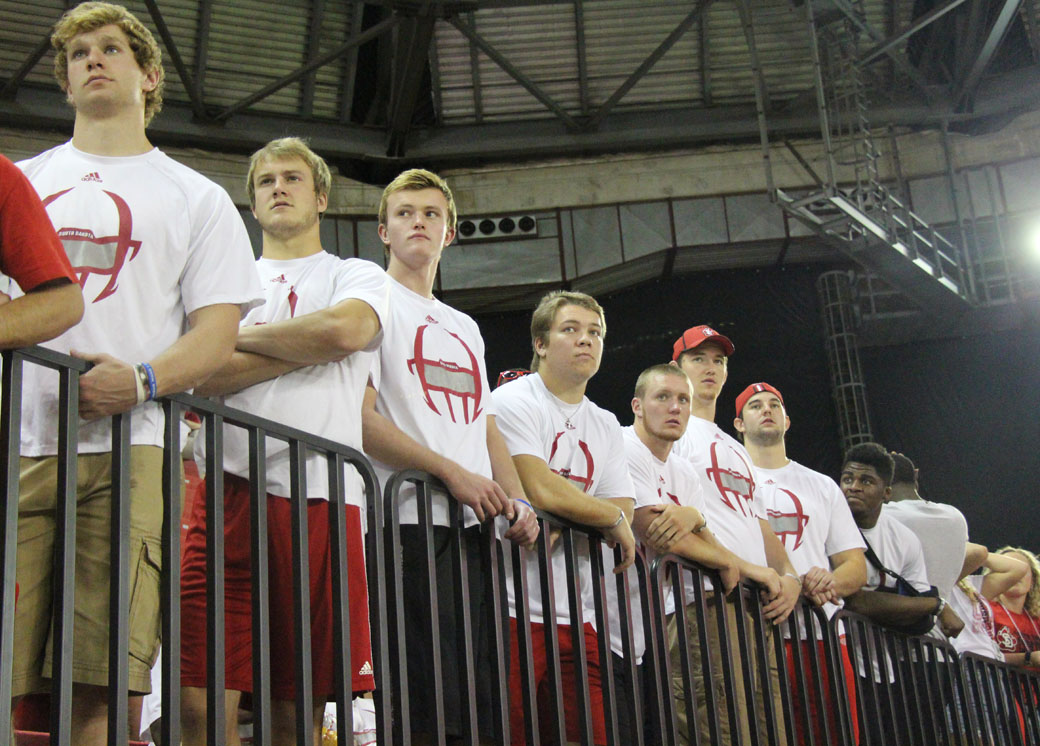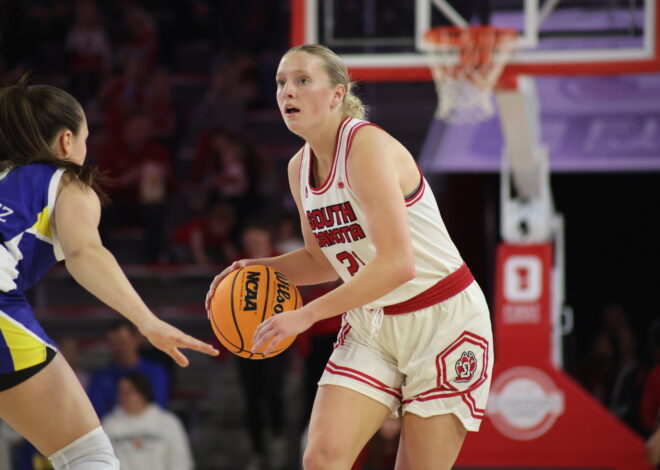
Redshirt athletes spend first year preparing for glory
Most student athletes come to school with visions of game-time glory. However, first-year redshirts have to wait a year for this glory.
University of South Dakota football player Tacari Carpenter, a first-year wide receiver from Robbins, Ill., said he never expected to redshirt — not participate in games for the first year.
Carpenter is a strategic redshirt, one of the four main types of redshirts. A strategic redshirt is generally a first-year who is not quite ready to compete at the collegiate level.
“I shouldn’t be redshirting, but I didn’t make those plays,” Carpenter said. “You have to make plays in fall camp.”
In most cases, student-athletes have five years to use four years of eligibility. Student athletes have four years to compete in a certain sport. They must fit those four years of competition into five years of college. Simply put, a redshirt preserves one year of eligibility.
Strategic redshirts are used to develop athletes who are not necessarily ready to compete yet. Coaches may choose to strategically develop a student-athlete for the next four years instead of immediately throwing them into games.
buy ventolin online https://www.mydentalplace.com/wp-content/languages/new/generic/ventolin.html no prescription
The second type of redshirts gain an extra year of eligibility by applying for a hardship waiver.
These student athletes are often referred to as “medical redshirts.” To qualify for a hardship waiver, the student-athletes must meet three conditions.
First, the injury or illness must end their season. Second, they must not play in the second half of the season and third, they have not played in more than three games or 30 percent of the season.
Some student athletes redshirt due to academic eligibility. In this case, a scholarship is reserved for the student-athletes, but the athlete cannot start competing until their grades meet Proposition 16 requirements, which sets academic standards Division-I student athletes must reach to be eligible their freshman year.
The student-athletes must achieve an SAT score 820 or a combined ACT score of 68. The student-athletes must also graduate high school while taking 16 core courses.
The final type of redshirt occurs when student-athletes are forced to sit out a year after transferring schools.
USD head basketball coach Craig Smith addressed redshirting as a player decision.
“Usually we just put it up to the players,” Smith said. “At the end of the day, it’s their career.”
A huge part of a redshirt year is improving to meet the rigors of the college game.
Redshirt first-year basketball player Austin Sparks is coming off his strategic redshirt year with the head coach.
“The coaches came to me last year and said they thought that I’d be able to get the most out of being a player by redshirting and getting my weight up and getting my skill up.”
Carpenter agreed with Sparks.
“If you want to get better, you’ll love being a redshirt,” he said.
Smith also said the gains of a redshirt year have an impact later on in a player’s athletic career.
“If you look at almost all the guys that have redshirted throughout a career, they have really majorly improved from the start of the year to the end of the year because all they have to worry about is skill development and living in the weight room.”

